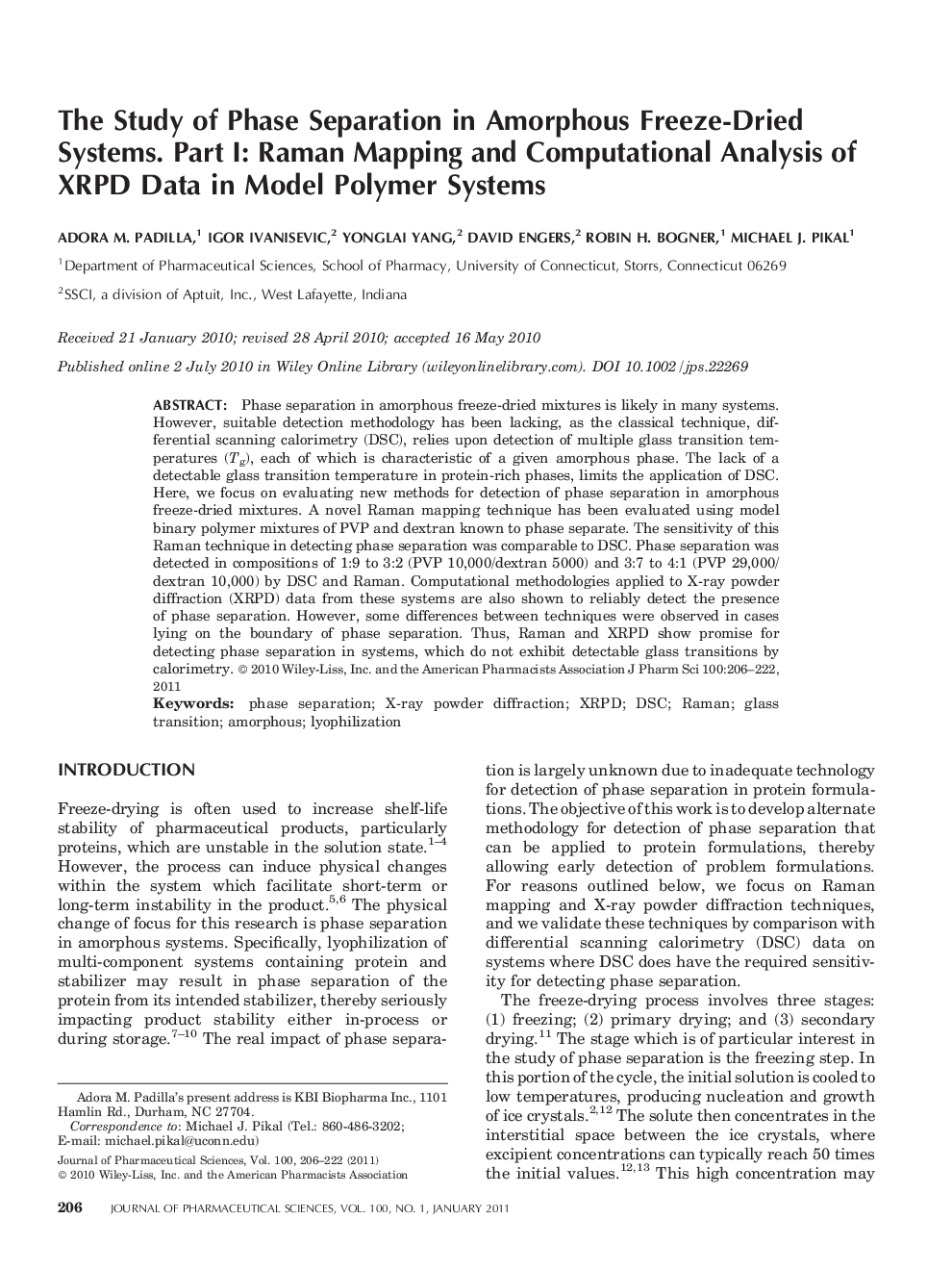| Article ID | Journal | Published Year | Pages | File Type |
|---|---|---|---|---|
| 2486793 | Journal of Pharmaceutical Sciences | 2011 | 17 Pages |
ABSTRACTPhase separation in amorphous freeze-dried mixtures is likely in many systems. However, suitable detection methodology has been lacking, as the classical technique, differential scanning calorimetry (DSC), relies upon detection of multiple glass transition temperatures (Tg), each of which is characteristic of a given amorphous phase. The lack of a detectable glass transition temperature in protein-rich phases, limits the application of DSC. Here, we focus on evaluating new methods for detection of phase separation in amorphous freeze-dried mixtures. A novel Raman mapping technique has been evaluated using model binary polymer mixtures of PVP and dextran known to phase separate. The sensitivity of this Raman technique in detecting phase separation was comparable to DSC. Phase separation was detected in compositions of 1:9 to 3:2 (PVP 10,000/dextran 5000) and 3:7 to 4:1 (PVP 29,000/dextran 10,000) by DSC and Raman. Computational methodologies applied to X-ray powder diffraction (XRPD) data from these systems are also shown to reliably detect the presence of phase separation. However, some differences between techniques were observed in cases lying on the boundary of phase separation. Thus, Raman and XRPD show promise for detecting phase separation in systems, which do not exhibit detectable glass transitions by calorimetry.
